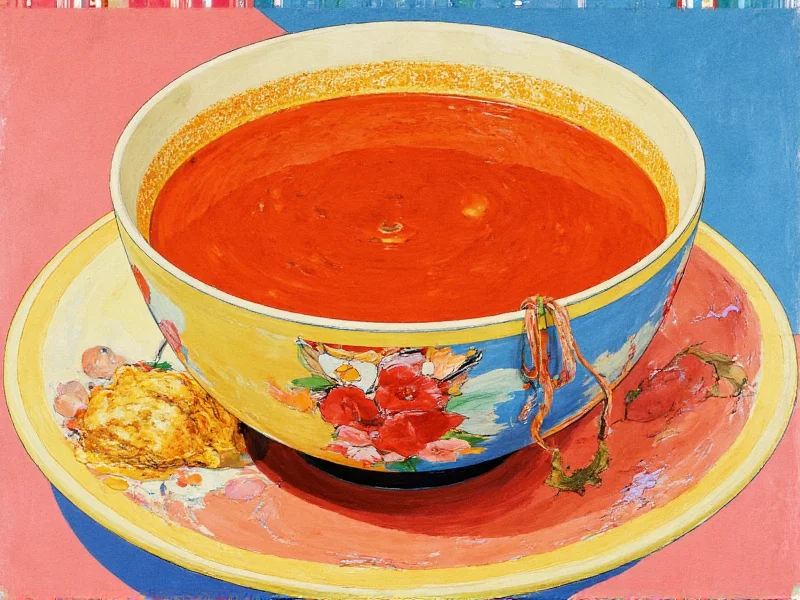Created during a pivotal moment in American culture, Warhol's soup paintings emerged when mass production and consumerism were reshaping society. The artist meticulously hand-painted each canvas to replicate the familiar red-and-white Campbell's labels, deliberately blurring the line between commercial design and fine art. This radical approach sparked intense debate among critics and established Warhol as a central figure in the burgeoning pop art movement.
The Historical Context of Warhol's Soup Series
Warhol completed his Campbell's Soup Cans series in 1962, a time when American consumer culture was rapidly expanding. The paintings debuted at the Ferus Gallery in Los Angeles in July 1962, marking Warhol's first solo exhibition in California. Initially met with skepticism, the show featured 32 individual canvases arranged in grid formation, each representing a different Campbell's soup variety available at the time.
Contrary to popular belief, Warhol didn't randomly select soup as his subject. He later explained that he had eaten Campbell's soup daily for 20 years, making it a deeply familiar part of his personal routine. This personal connection transformed an ordinary grocery item into a profound artistic statement about the intersection of personal experience and mass-produced culture.
Artistic Technique and Significance
Each painting in the Campbell's Soup Cans series measures 20 x 16 inches and was created using acrylic with metallic enamel paint on canvas. Warhol initially painted the canvases by hand, projecting images of the soup cans onto the surface and tracing them before filling in the colors. This methodical process deliberately mimicked commercial production techniques, further emphasizing his commentary on mass production.
| Key Details | Information |
|---|---|
| Year Created | 1962 |
| Number of Paintings | 32 individual works |
| Dimensions | 20 x 16 inches each |
| Medium | Acrylic with metallic enamel on canvas |
| Current Locations | Various museums worldwide including MoMA, Whitney, and SFMOMA |
Cultural Impact and Legacy
Warhol's Campbell's Soup Cans fundamentally challenged the art establishment by elevating commercial imagery to the status of high art. Before this series, fine art typically featured 'important' subjects like portraits, landscapes, or abstract expressions of emotion. By choosing a mundane grocery product, Warhol questioned what society deemed worthy of artistic representation.
The work's significance extends beyond the art world into broader cultural commentary. Warhol captured the essence of post-war American consumer culture, where brand identity and mass production were becoming central to daily life. His soup paintings serve as both celebration and critique of this emerging reality, making them enduringly relevant in our increasingly branded world.
Where to View Warhol's Soup Paintings Today
While the original 32 paintings were sold as individual works, several have found homes in major museums. The Museum of Modern Art in New York houses "Campbell's Soup Cans" (1962), while the San Francisco Museum of Modern Art displays "Chicken Noodle Soup" (1962). The Andy Warhol Museum in Pittsburgh maintains the largest collection of Warhol's works, though not the complete soup series.
Understanding the meaning of Warhol soup art requires recognizing how these paintings bridged the gap between commercial illustration (which Warhol practiced successfully before becoming a fine artist) and the fine art world. This transition represented a seismic shift in artistic values that continues to influence contemporary artists exploring brand culture and consumer identity.
Why Warhol's Soup Art Remains Relevant
More than six decades after their creation, Warhol's Campbell's Soup Cans continue to resonate because they anticipated our current reality where branding permeates every aspect of life. The paintings serve as historical documents of 1960s America while simultaneously predicting our modern obsession with logos, packaging, and corporate identity.
For art students researching the history of andy warhol soup paintings, these works demonstrate how an artist can transform ordinary objects into profound cultural statements. The series exemplifies how context determines meaning in art—a grocery product becomes high art simply through its presentation in a gallery setting.
FAQ
Why did Andy Warhol choose Campbell's soup for his famous paintings?
Warhol selected Campbell's soup because it was a familiar part of his daily routine—he reportedly ate it for lunch nearly every day for 20 years. The brand's consistent packaging and widespread recognition made it the perfect subject to explore themes of mass production, consumer culture, and the blurring line between commercial design and fine art.
How many Campbell's Soup paintings did Andy Warhol create?
Warhol created 32 individual paintings in the Campbell's Soup Cans series, each representing one of the 32 soup varieties Campbell's offered at the time (1962). The complete set was first exhibited together at the Ferus Gallery in Los Angeles, arranged in a grid formation resembling grocery store shelves.
Where can I see Andy Warhol's original soup paintings today?
The original 32 Campbell's Soup Cans paintings are dispersed across various collections. Notable locations include the Museum of Modern Art (New York), San Francisco Museum of Modern Art, Whitney Museum of American Art, and the Andy Warhol Museum in Pittsburgh. No single institution owns the complete set, though the Andy Warhol Museum has the largest collection of Warhol's works overall.
What was the significance of Andy Warhol's soup paintings in art history?
Warhol's Campbell's Soup Cans revolutionized art history by bridging commercial illustration and fine art, launching the pop art movement. The work challenged traditional notions of artistic subject matter by elevating everyday consumer products to gallery status. This radical approach questioned the distinction between 'high' and 'low' culture and paved the way for contemporary artists who incorporate commercial imagery and branding into their work.
How did Andy Warhol create his Campbell's Soup Cans paintings?
Warhol initially created the Campbell's Soup Cans paintings by hand, projecting images of the soup cans onto canvas and tracing them before filling in the colors with acrylic and metallic enamel paint. Later, he transitioned to silkscreen printing techniques that better mimicked industrial production methods. Each painting measures 20 x 16 inches, matching the actual size of the soup cans they depicted.











 浙公网安备
33010002000092号
浙公网安备
33010002000092号 浙B2-20120091-4
浙B2-20120091-4